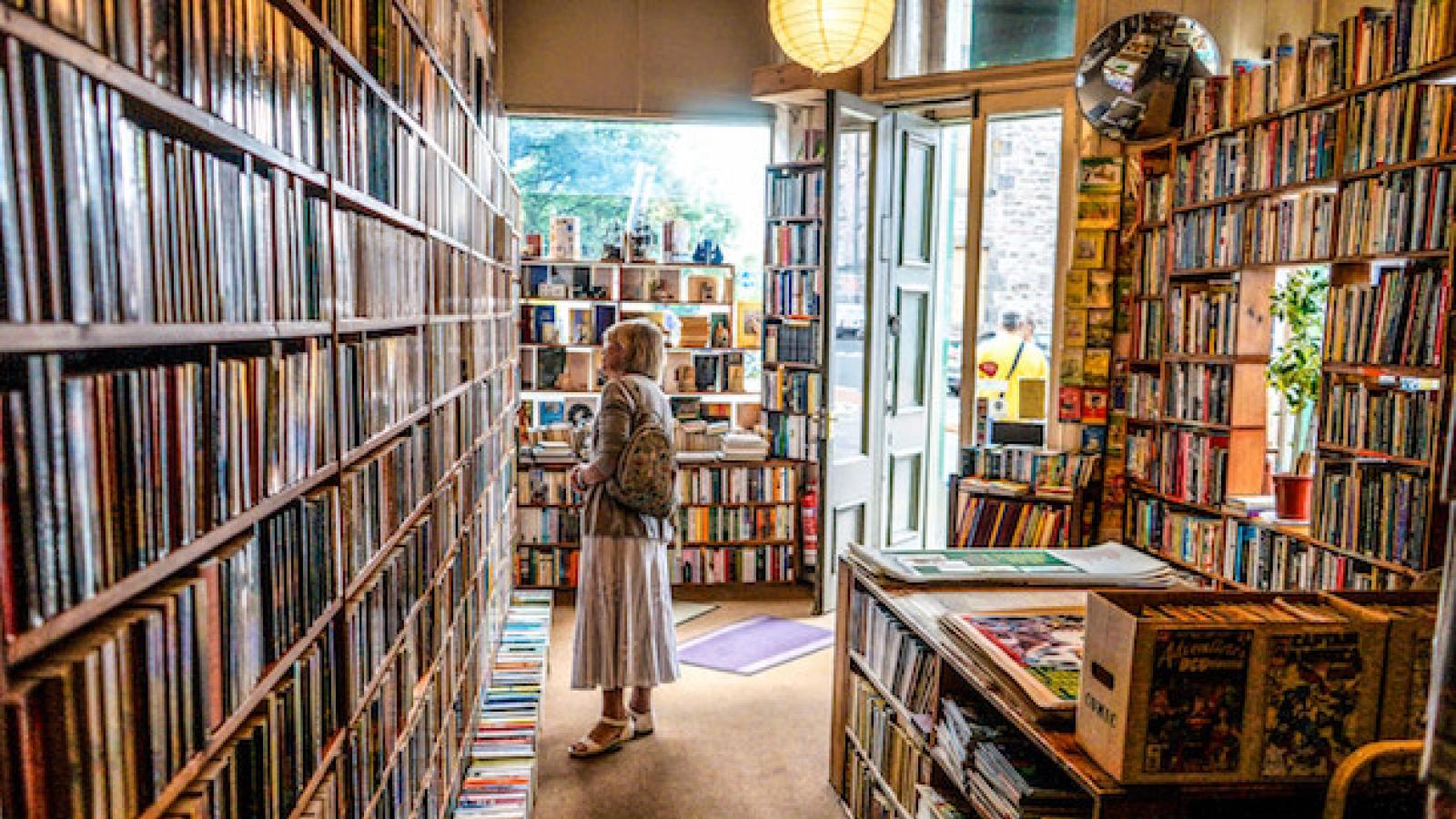Is It Time for a New Literary Genre?
Here’s a question the NEA literature staff has been thinking about lately: what do you call a literary title that infuses text with art and is primarily geared toward grownups? A graphic novel? Picture book? Art book? Illustrated book? Or, as the poet Matthea Harvey suggested to me recently as we sat and discussed the matter over brunch, a “tart” (text + art)?
Let’s first unpack those labels and get to the bottom of what we mean by infusing text with art. A graphic novel or memoir relies on art—sometimes exclusively—to tell a story. It often (though not always) has narrative drive and features text and boxed-in drawings that work in tandem. A good example is Roz Chast’s Can’t We Talk About Something More Pleasant?, one of the selected titles on the NEA Big Read list.
But graphic novels and memoirs, as we have come to know them, are only two types—let’s call them subgenres—of the kinds of books that infuse text with art. Claudia Rankine’s Citizen, for example, is another title on the NEA Big Read list. The text alone is difficult to categorize, as it combines poetry with commentary, film scripts, slogans, and quotes. The book also includes powerful photographs, screenshots, and images of curated artwork that were placed “in the text where I thought silence was needed, but I wasn’t interested in making the silence feel empty or effortless the way a blank page would,” as Rankine told Bomb Magazine. The book’s subtitle, “An American Lyric,” said Rankine’s editor Jeff Shotts, “describes a genre that Claudia has invented … to engage a kind of American consciousness, and to engage it through lyric thinking and feeling.”
Bookstores often have a “graphic novel” section so browsers can easily find books like Chast’s. Sometimes they’re shelved alongside comic books. (The question of what defines a comic book versus a graphic novel could likely fill another blog post.) Citizen is almost always shelved in a store’s poetry section. And as I look at my own shelves, I see that many of my favorite text + art books could, and probably are, shelved under the sections that correspond to their texts. Shelved in poetry: Matthea Harvey’s Of Lamb, which pairs her erasure poems with paintings on every page by Amy Jean Porter. Shelved in the sciences: Thunder & Lightning by Lauren Redniss, a fusion of original artwork, storytelling, and reportage that Elle described as “a new literary genre,” (though the magazine didn’t put a name to that new genre). Shelved in the autobiography section: Maira Kalman’s The Principles of Uncertainty, which recounts a year in her life “profusely illustrated” with full-spread paintings and words abounding with “musings, meanderings, buckets of joie de vivre, and restful sojourns,” as she writes on the flap. “What is this book?” she asks. “What is anything?”
A classic literature section of a bookstore might include illustrated versions of well-known titles that, due to the artwork, help us see the work anew, or from a new perspective and with more layered complexity. On this shelf one might find, for example, Matt Kish’s Moby-Dick in Pictures, One Drawing for Every Page; The Conference of the Birds, with drawings by Peter Sis; and beautiful editions of Lewis Carroll’s Alice’s Adventures in Wonderland, one featuring artwork by Japanese artist Yayoi Kusama and another by the Spanish surrealist Salvador Dali, who was commissioned to illustrate the book in 1969.
I am drawn to books that engage my senses and intellect through both text and image, but they are hard to find and sometimes even harder to describe. Perhaps because they are so varied, they don’t always come up in “If you liked that, you might like this” searches. When speaking of these books, I have used the term “adult picture book,” but it always sounds unsettling when I say it aloud. And an art book sounds like it’s a book about art or a particular artist.
Of course, at this point you may be asking: do we need to lump all these books into one category? Are there enough of them to warrant it? Are there enough people who seek them out (or would if they knew about them)? If they did have their own section with a new genre name, would they be shelved under the artist’s name or the author’s?
Fair enough. Perhaps they are meant to remain the eccentric cousins at a family reunion. Or perhaps instead of a new genre we can collectively come up with a new tag word, something to help readers find and engage with these books on their own, multifaceted terms. Anyone have any suggestions?




